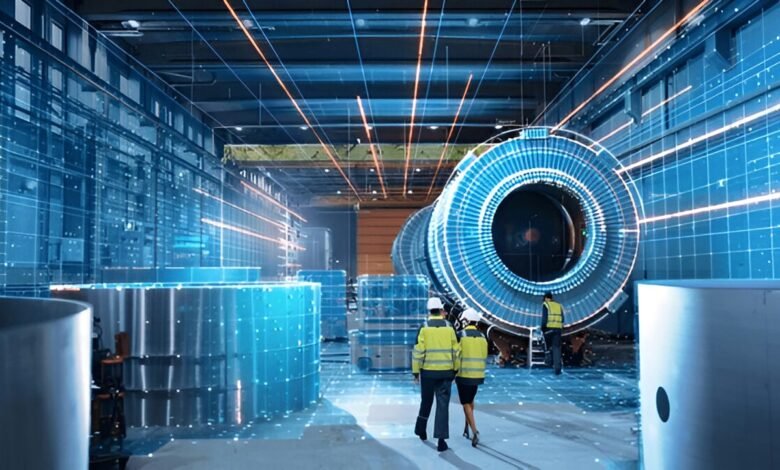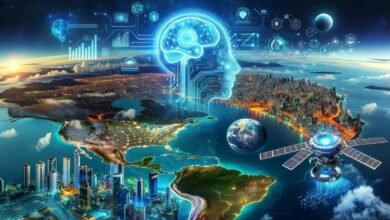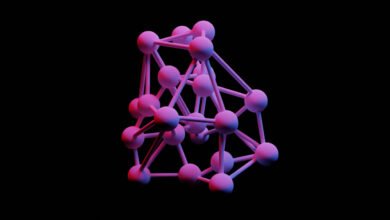4 Industries Changed by IoT
The IoT has already begun to drastically change several sectors, and that's only the beginning. The Internet of Things (IoT) is generating a lot of buzz in certain industries, such as healthcare and technology.

The IoT has already begun to drastically change several sectors, and that’s only the beginning. The Internet of Things (IoT) is generating a lot of buzz in certain industries, such as healthcare and technology. Some are more unexpected.
The following are four examples of sectors that could seem impossible.
1. Oil and Gas
Internet of Things (IoT) applications in the oil and gas industry are particularly intriguing due to the prevalence of remote locations in this industry.
A corporation may deploy Internet of Things (IoT) sensors to inspect an oil rig for maintenance issues rather than sending a person to inspect the rig manually. Those devices could notify you of impending maintenance needs and provide real-time updates.
Internet of Things (IoT) devices are also used by oil and gas companies to track how well their stuff is doing. It becomes much easier to make informed adjustments that could optimize productivity while keeping costs down when that is done.
People should keep in mind that the oil and gas industry is inherently dangerous, despite the fact that its employees undergo extensive specialized training.
The Internet of Things allows businesses to monitor their facilities and machinery with less reliance on human operators.
2. Agriculture
A common misconception is that farmers rely heavily on educated guesses and a healthy dose of hope for favorable weather conditions to ensure a productive growing season.
The Internet of Things has made that a thing of the past. To stay competitive, farmers know their enterprises must undergo digital revolutions. Internet of Things (IoT) applications are a popular choice for many to begin the transition.
One common reason for this is because Internet of Things (IoT) sensors are often preferred over other high-tech innovations in agriculture, such as drones, due to their superior accuracy and ease of use.
Also Read: Smart Farming: What it is? and The Future of Agriculture
One example is the use of sensors that may collect data about water usage, pest problems, and expected yields from crops themselves. By affixing Internet of Things (IoT) sensors on cattle, farming companies may monitor their whereabouts and perhaps detect health issues through behavioral issues.
Agricultural experts can get vital information about things that might negatively impact their season’s performance thanks to the real-time analytics linked to many of the connected IoT apps. Before things get out of hand, they can make changes to control or manage such aspects. Therefore, while investing in Internet of Things (IoT) sensors for use in agriculture may appear costly at first, the payoff is enormous in the long run.
By 2024, experts in the field predict that over 2 million farms will have connected their cattle herds, totaling 36 million. However, a lack of knowledge among the intended users can slow down the Internet of Things (IoT) adoption rate in agriculture.
Farmers may be hesitant to invest in sensors unless they have personal experience with them or know someone who has.
3. Heating, Ventilation and Air Conditioning (HVAC)
Until anything goes wrong, homeowners seldom give much thought to their home’s temperature control system. A professional in HVAC systems should be contacted when this happens. Installing, maintaining, and removing the related equipment from homes and businesses has traditionally been done by such individuals.
Heating, ventilation, and air conditioning (HVAC) technicians still handle these requirements, but the technology is becoming more automated, linked, and computerized. Adapting to these developments necessitates that HVAC professionals always enhance their skills by remaining updated on the latest technological possibilities.
Thermostatically controlling a company’s several locations around the nation is one use case for the Internet of Things (IoT) in HVAC. If such were the case, officials at the brand’s headquarters might monitor the energy consumption of specific sites or use measures to determine the extent to which a company is meeting its sustainability commitments about energy use.
4. Brick-and-Mortar Retail
After a rough few years, many industry watchers have proclaimed this era a “retailpocalypse.” As a matter of fact, one need not scour the news for long to come across reports of a once-popular brand either going bankrupt or axing all of its brick-and-mortar stores.
Nevertheless, with careful planning, IoT sensors have the potential to elevate the consumer experience, thereby retaining their loyalty.
Shops often use Internet of Things devices that can connect to customers’ mobile phones. Someone may, for instance, get sale notifications at the same time as they stroll through a certain section of a business if they linger there.
The Internet of Things also helps reduce the number of dissatisfied consumers. Finding out what Americans considered most annoying about traditional stores was the goal of a 2017 survey by Mood Media.
As for the second most common complaint, 47% of consumers brought up the fact that things were out of stock. Mainly, standing in line was a problem.
We can address both of those concerns with IoT. With the use of product sensors, shop owners and managers can keep tabs on inventory and reduce the frequency of things selling out. Of all the traditional stores that do not have cashiers on staff, Amazon Go is probably the best known.
Nonetheless, other stores are also testing out IoT-based solutions. You might also see some of them using cameras that are powered by artificial intelligence.
The IoT Propelling Progress
Even if they may not be the first to think of it, the industries on this list are making great achievements with the help of IoT.
Its adaptability is undoubtedly a plus that broadens its use beyond just one industry.










